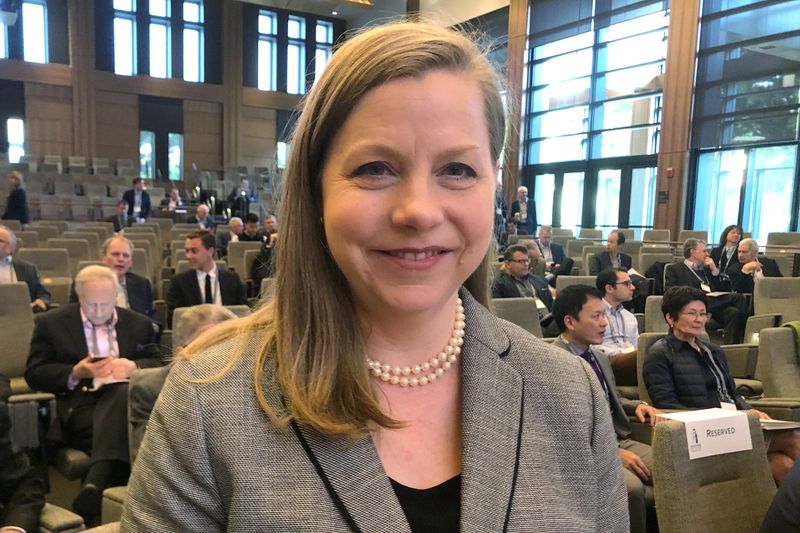WASHINGTON (Reuters) - Federal Reserve Governor Michelle Bowman on Wednesday became the first Fed governor to vote against an interest-rate decision by the U.S. central bank since 2005, denying Fed Chair Jerome Powell a clear consensus at a pivotal moment.
The Fed's other 11 voting members all cast their ballots in support of reducing the Fed's policy rate by half a percentage point. Bowman, the Fed said, preferred a quarter-point rate cut.
Of the Fed's 19 policymakers who take part in each two-day rate-setting meeting, only 12 cast a vote on the decision. Those include eight permanent voters, including all seven members of the Fed Board and the president of the New York Fed, with the remaining 11 Fed presidents trading off one-year turns at the ballot box in groups of four.
Before 1995 dissents from Fed governors were not infrequent, but since then it has been Fed presidents who have cast the overwhelming majority of the 90-plus dissents in that time period. Fed chairs typically seek consensus on decisions, sometimes reaching compromises to avert open disagreement that could be seen as undercutting their credibility.
"I do think that we’re a consensus-driven organization," Fed Chair Jerome Powell said after the July rate-setting meeting, at which the group reached its 17th straight unanimous rate-setting decision. During the pandemic dissents were infrequent. "We felt more united because we felt under a lot of pressure to get things right," Powell said then, "but before the pandemic, we had plenty of dissents. And dissents happen. It’s part of the process. There’s nothing wrong with dissents, and if it happens, it happens."
Watershed moments in Fed decision-making are, in fact, sometimes marked by dissents.
In June 2022, Kansas City Fed President Esther George cast what until Wednesday had been the most recent dissent. She had argued for a smaller rate hike, but her colleagues opted for a 75-basis-point increase to battle accelerating inflation. It was the first of a string a four such super-sized moves, the rest of which George ended up backing.
Dissents "clearly suggest that they are not suffering from 'group think,'" said ING economist James Knightley before the meeting. "There are lots of risks to balance and (dissent) would suggest tough discussions are being had."
Ahead of the Fed's decision, financial market bets were running in favor of a half-of-a-percentage-point rate cut; analysts at Wall Street firms for the most part expected a quarter-point cut.
Bowman has made a practice of publicly diverging from the majority at the Fed Board over regulatory matters, with frequent and repeated calls for a lighter touch on banks.
Over the past year she also emerged as one of the Fed's most hawkish voices on monetary policy, supporting a higher Fed policy rate for longer than most of her fellow central bankers in order to be sure to fully vanquish inflation. Bowman's dissent on Wednesday was the first by a Fed governor in the hawkish direction - that is, in favor of tighter monetary policy, rather than looser - in nearly 30 years.
Below is a sampling of some notable dissents in recent Fed history.
MOST RECENT OCCURRED IN CAST BY
Dovish dissent June 2022 Kansas City Fed's Esther George
Hawkish dissent March 2022 St Louis Fed's James Bullard
Two dissents Sept 2020 Dallas Fed's Robert Kaplan, Minneapolis
Fed's Neel Kashkari
Three dissents Sept 2019 Bullard, George, Boston Fed's Eric
Rosengren
Fed Governor dissent Sept 2005 Marc Olson, who wanted easier policy
Fed Governor hawkish Dec 1994 John LaWare, who wanted tighter policy
dissent

Four dissents Oct 1992 Two governors, two presidents
Five dissents May 1983 Two governors, three presidents